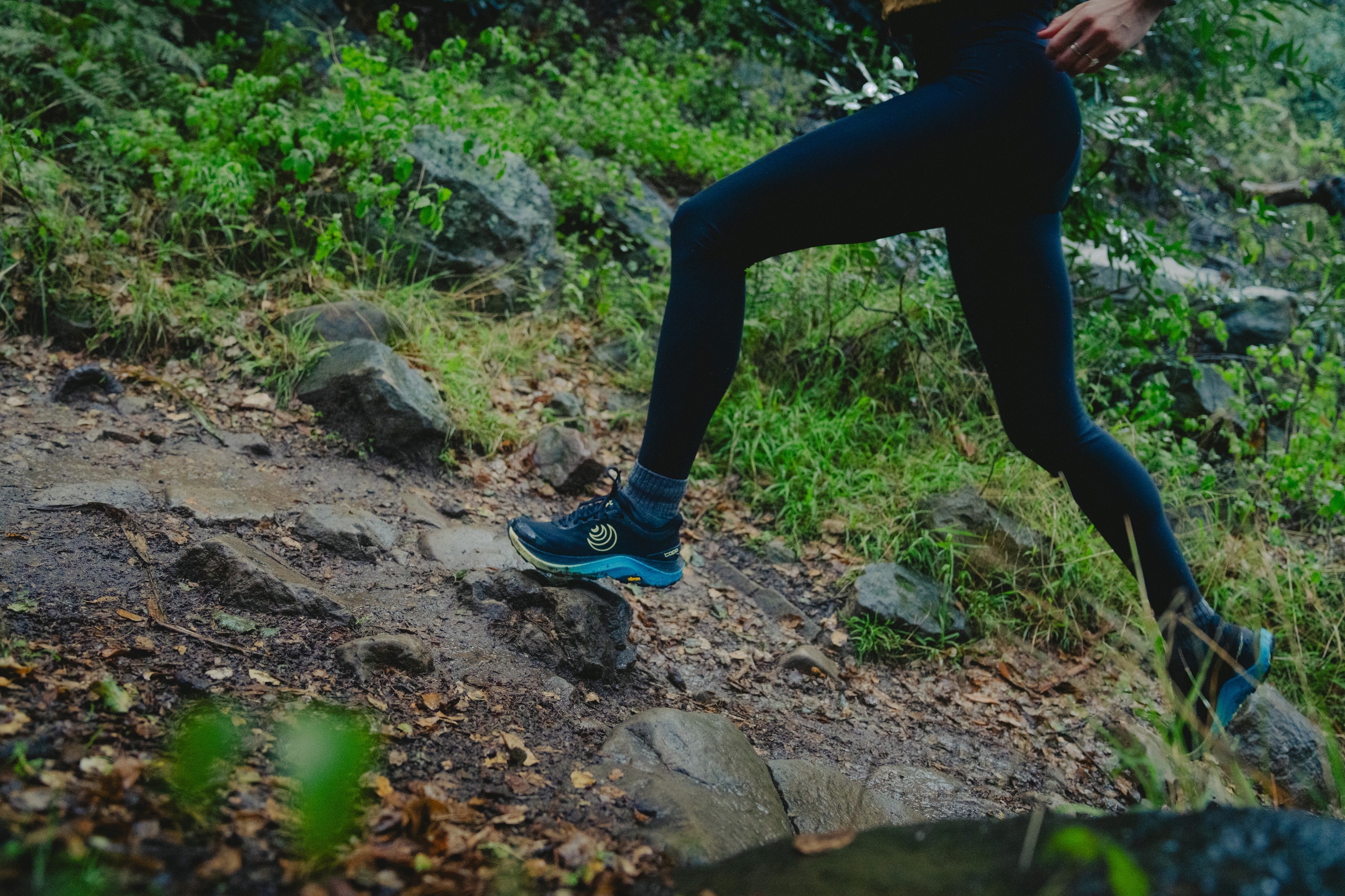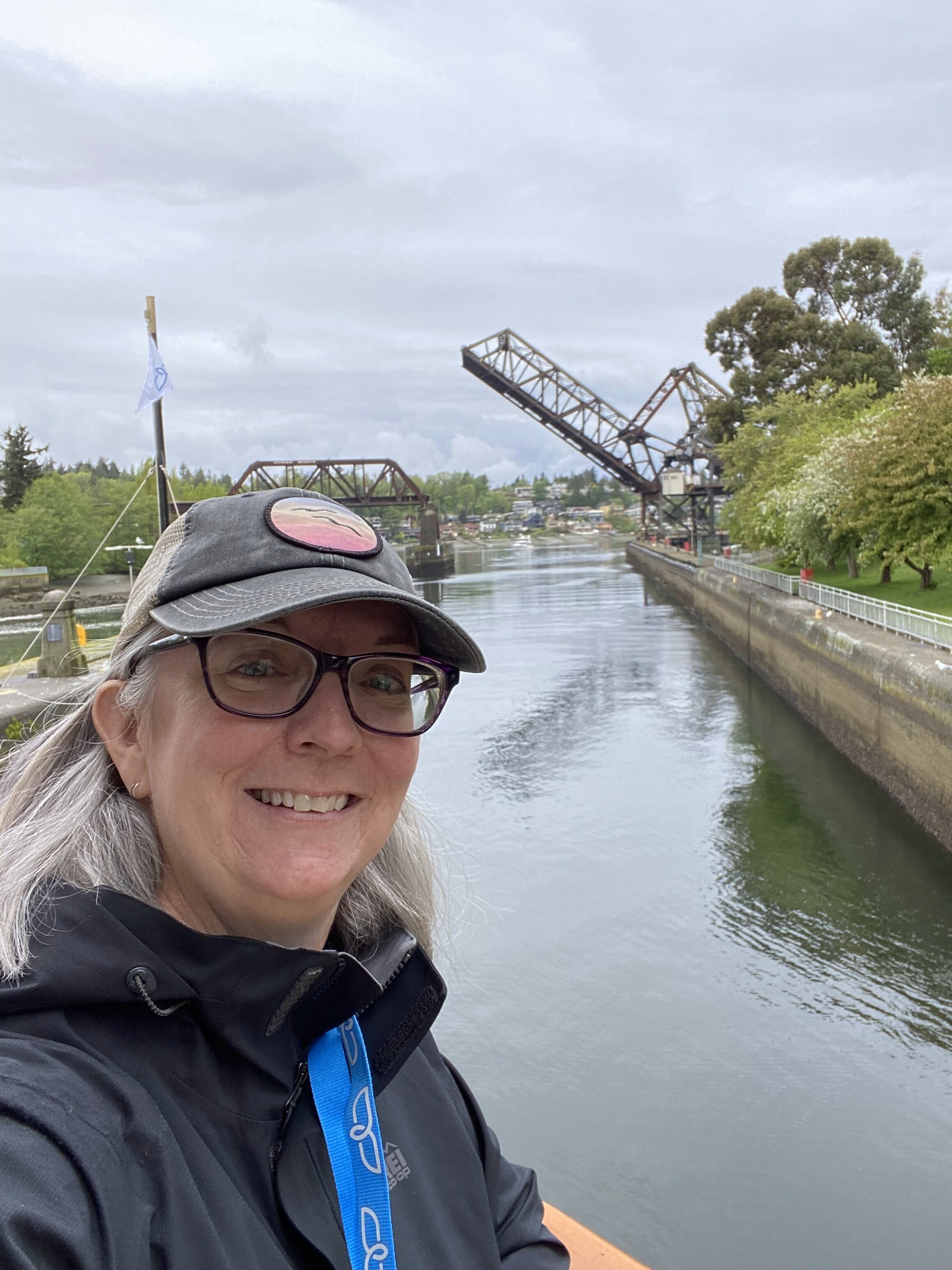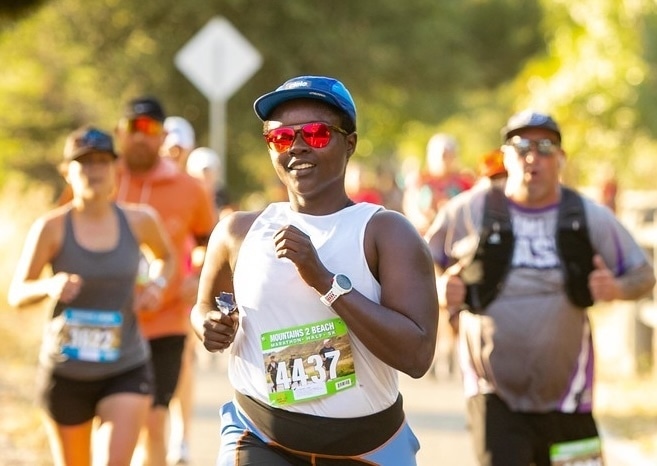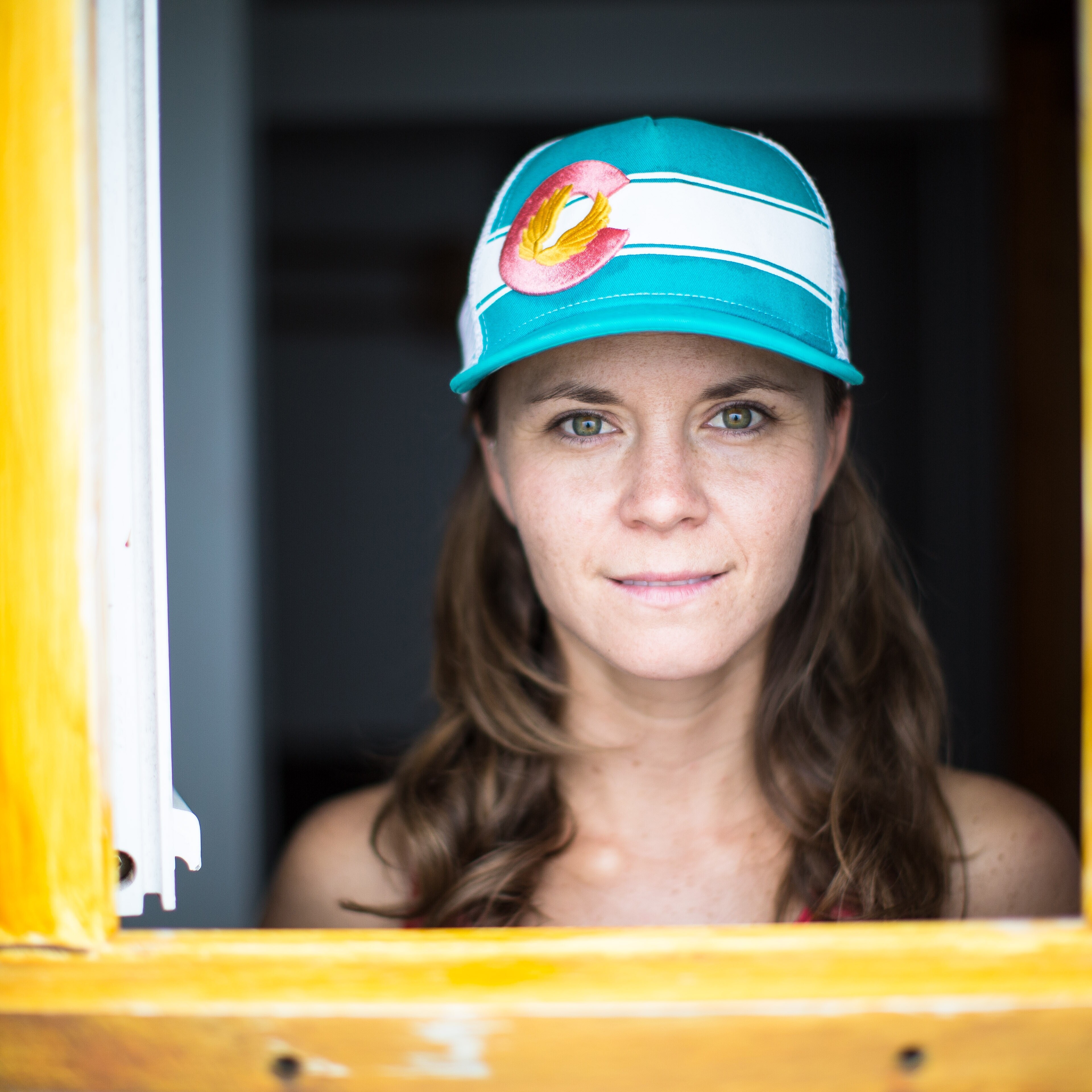The dusty trail is as fit for runners as it is for hikers, bikers and four-footed friends. But if you're hoping to speed up on rocky terrain, you'll need the right shoes. There's all kinds of trail, from mostly even, often manicured light paths to the wildness of rugged mountainscapes. The trail-running shoes suited to each—and everything in between—will look and feel a bit different, but a few basics run across categories: You'll want your them to have appropriate grip; to withstand the added wear-and-tear of rocky, dusty, and even muddy or icy running; and to be nimble enough to handle quick changes in footing and direction.
So, how to find that special pair for you? Over several months in the spring and summer of 2025, our team of over 50 REI Co-op Member-testers have tested over 20 trail-running shoes, evaluating everything from comfort to traction to bring you the best of the best. They ran hundreds and hundreds of miles throughout the U.S., from crumbly southern Californian peaks to damp Illinois trails, battling slipperiness in the spring and mugginess in the summer. In this guide, you'll find options for long runs, technical terrain, road to trail, hiking and more.
Test Results
Find our quick recommendations here, or read on for full reviews of our round-robin test of the five best trail-running shoes.
- New Balance Fresh Foam X Hierro V9 Trail-Running Shoes
- Brooks Cascadia 19 Trail-Running Shoes
- Topo Athletic Ultraventure 4 Trail-Running Shoes
- Salomon Genesis Trail-Running Shoes
Jump to Buying Advice and How We Test.
Editor's note: We updated this story on November 11, 2025, to replace out-of-stock merchandise with a new winner: New Balance Fresh Foam X Hierro v9 trail-running shoes.
New Balance Fresh Foam X Hierro v9 Trail-Running Shoes
Score 96
Weight (Pair) 1 lb. 0.6 oz. (women's), 1 lb. 4.6 oz. (men's)
Heel-to-toe drop (mm) 4
Cushion Maximum (42 mm stack height)
Best for Technical terrain, rugged trail, long runs, daily training
Few other athletic brands have been on the rise like New Balance these last few years. Known for their super-comfortable sneakers, the brand has embraced their soft-sole legacy while dialing up the technical bona fides of its wide array of running shoes. The Fresh Foam X Hierro v9 is no exception to this upward trend. With a monster stack height of 42 mm in the heel and 38 mm in the forefoot (for a stable, moderate drop of 4 mm), these max cushioned shoes or built to take you the distance on the trails. There's no need to fear the plushness when it comes to energy return: Washington-based tester George O. found the Fresh Foam X Hierro v9 plenty responsive, calling them "a full-suspension mountain bike for your feet!"
A synthetic mesh upper and gusseted tongue allow for a cozy fit while a toe cap keeps the rocks, roots and debris of technical trails from wreaking havoc. As for fit, a slightly more aggressive profile means the Hierro v9 shoe sports a medium-sized toe box in comparison to other New Balance models. George O. found the toe box plenty roomy for his purposes while Illinois-based tester and REI marketing program specialist Emily Leu found it a little snug around the pinky—so if you tend to prefer a wider fit, consider a half-size up.
Don't worry about slipping in these durable trail runners: Vibram® Megagrip outsoles, Traction Lug™ tech plus a new-and-improved tread pattern provide sure footing in wet and muddy conditions. Leu was impressed by the Hierro v9's grip during rainy runs while George O. "felt totally secure" on uneven terrain and had no problems navigating light mud. Durability impresses, too. After over 70 miles in the shoes, "they barely look used," Leu says. Both testers praised the reinforced stitching around the toe box, with George O. crowning the Fresh Foam X Hierro v9 his "new trail runner—no question about it." Buy here.
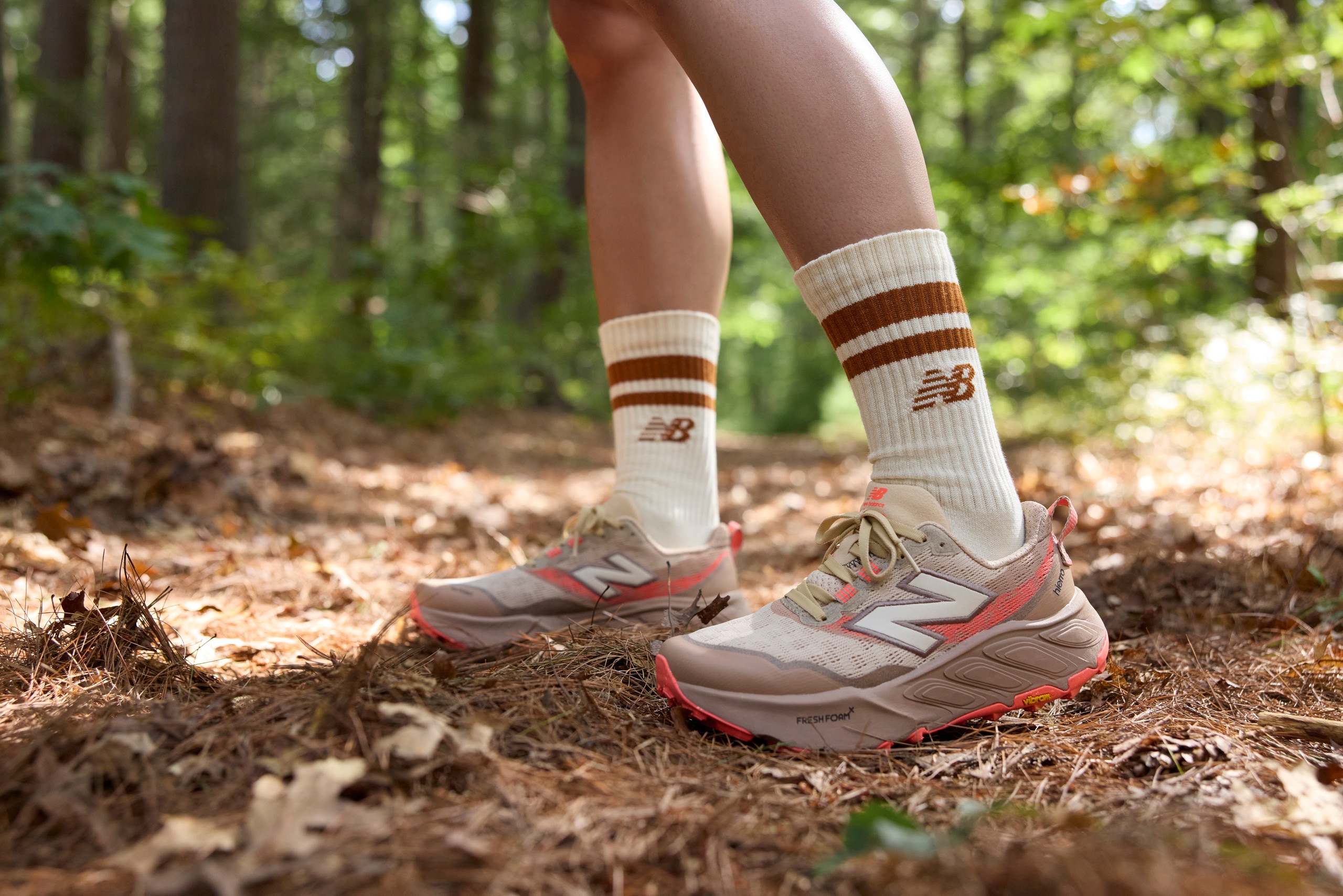
Bottom Line: The New Balance Fresh Foam X Hierro v9 is a majorly comfy running shoe that's game for whatever the trails throw at you—from big rocks and roots to mud and hills.
Testing Stats:
- Total distance: 132 miles
- Testing states: Washington and Illinois
- Best testing story: Washington-based tester George O. took the Fresh Foam X Hierro v9 into the mud and came out all the better for it: "I ran through it all like a gazelle (although I'm sure that's not what it looked like to others). Full confidence in every step."
Brooks Cascadia 19 Trail-Running Shoes
Score 94
Weight (Pair) 1 lb. 3.6 oz. (women's); 1 lb. 5.4 oz. (men's)
Heel-to-toe drop (mm) 6
Cushion Maximum (35 mm stack height)
Best for Trail runs with varying terrain, technical and rugged terrain, hiking
From its familiar looks, you might think that round 19 of the Brooks Cascadia is unlikely to make much of a splash. But you'd be wrong. Monica Prelle, tester and REI senior program manager of internal communications editorial strategy, says the shoe provides "quite a difference from past versions of the Cascadia." That’s because Brooks took user feedback to make this latest iteration lighter. This adjustment, along with an updated DNA LOFT v3 midsole cushioning, earned it a high ranking among testers.
The difference is nitrogen—it's infused into the v3 DNA LOFT foam, providing a midsole that is "super comfortable underfoot, without being too cushy," according to Prelle. A Trail Adapt System that integrates the rock plate within the foam cushioning provides a cushioned feel while still protecting your feet on varied trail conditions. Prelle wore the Cascadia 19 for a trail race with rocky single track and flats, and found it could "definitely handle a wide variety of paces and terrain"—an essential element for any trail shoe.
All the praise isn't reserved just for the Brooks Cascadia 19 midsole, however. Both testers commented on the softness of the tongue, with Paolo Mottola, tester and divisional vice president of brand marketing at REI, describing it as "cushioned and beefy," while still maintaining the breathability needed in a trail runner. The toe box was deemed "wide enough but not too roomy" by Prelle, while Mottola found the upper ran true to size, confirming that sizing up is not necessary. Consensus: Brooks has comfort at top of mind, and wearers can feel it.
The Cascadia 19’s final upgrade is a new lug pattern on its outsole that's made with 25% recycled content. While not necessarily a peak-bagging shoe, Prelle said the shoe had "good underfoot protection for rocky terrain." Her verdict: "The new Casacadia seems to be the one shoe that can do it all.” Buy here.
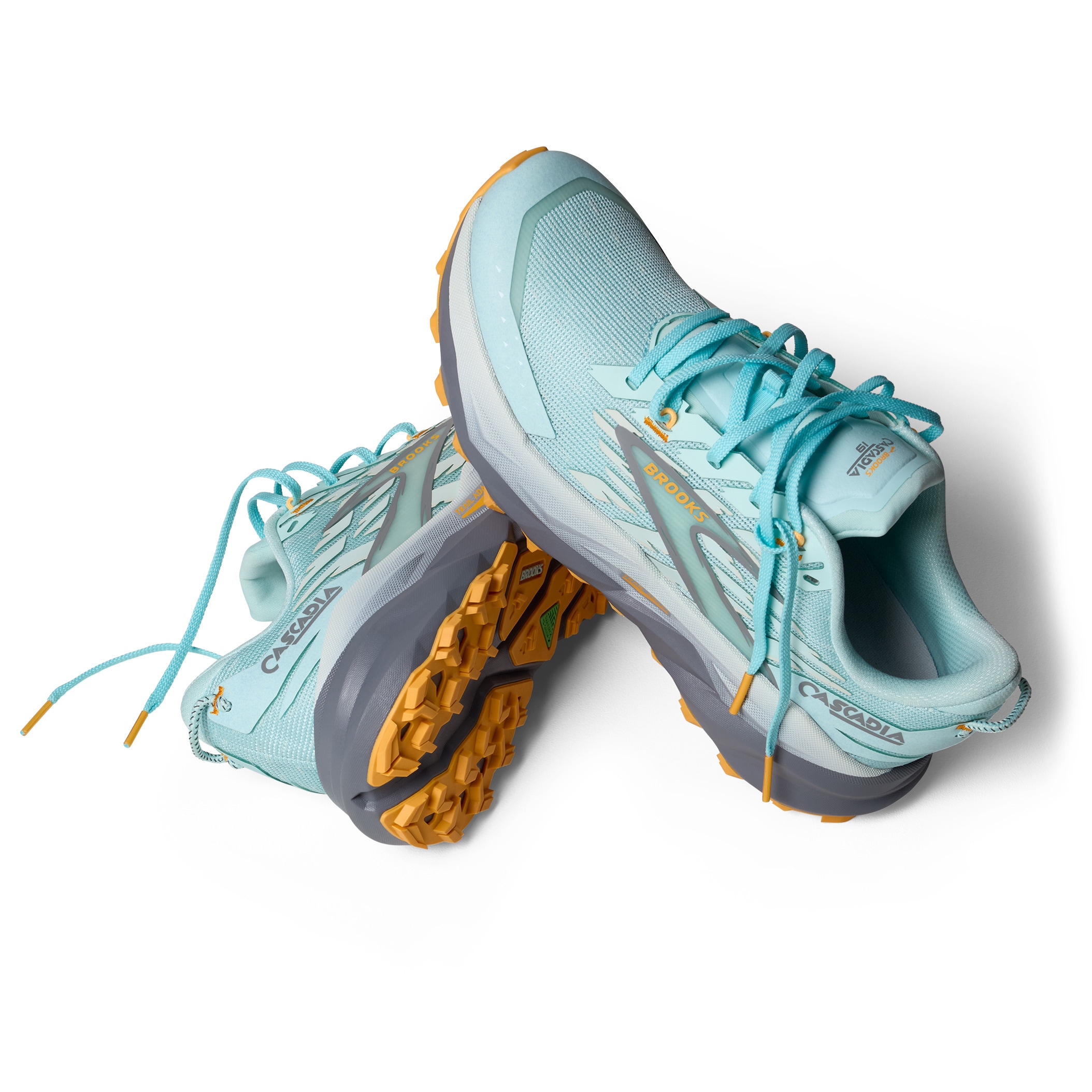
Bottom Line: The improvements in the Cascadia 19 show that Brooks brought comfort to the forefront with this latest version, making this a solid trail running shoe for varied conditions.
Testing Stats:
- Total distance: 110 miles
- Testing states: Washington
- Best testing story: It's all about versatility for the Brooks Cascadia 19, according to Mottola: "The shoe is incredibly stable across terrain types, soft dirt, firm dirt, tree roots, gravel and firm rock. You really feel superhuman in these Cascadias. They live up to the reputation and legend."
Topo Athletic Ultraventure 4 Trail-Running Shoes
Score 94
Weight (Pair) 1 lb. 0.6 oz (women's); 1 lb. 4.8 oz. (men's)
Heel-to-toe drop (mm) 5
Cushion Maximum (35 mm stack height)
Best for Long trail runs, hiking, road to trail
If you are looking for a trail shoe with a little bit of everything—a roomy toe box combined with a springy midsole and a grippy outsole—the Ultraventure 4 from Topo Athletic should be on your list. A comfortable fit out of the box had our testers singing this shoe's praises, with Heidi W., a Minnesota-based tester, sharing: "The first day I put it on, my dog and I walked 5 miles and I didn't get a blister, or feel any pain."
The Ultraventure 4 boasts an anatomical toe box, giving the forefoot plenty of room to spread naturally. Even wool socks were no issue with this shoe, according to Heidi W. The fit received consistently high ratings, as testers appreciated being able to use the lace-lock feature to secure the midfoot and heel. "Even after running for 6 hours, as the 6-hour pacer for the Fargo marathon, I still felt like I had good room to wiggle my toes in the toe box and I had no hot spots or blisters," shared Jason B., a New Mexico-based tester.
The Ultraventure 4 features a Vibram outsole for enhanced grip and traction, and our testers found that it provided a wide surface area that performed well on a variety of surfaces. "The Topo Ultraventure has low-profile, firmer lugs that didn't feel grabby on hard surfaces and didn't noticeably rob energy and power," Andy Frey, REI store manager and Colorado-based tester, shared. "On hard-packed dirt trails and loose-over-hard, as well as chunky technical terrain, I had zero issues with traction." Buy here.
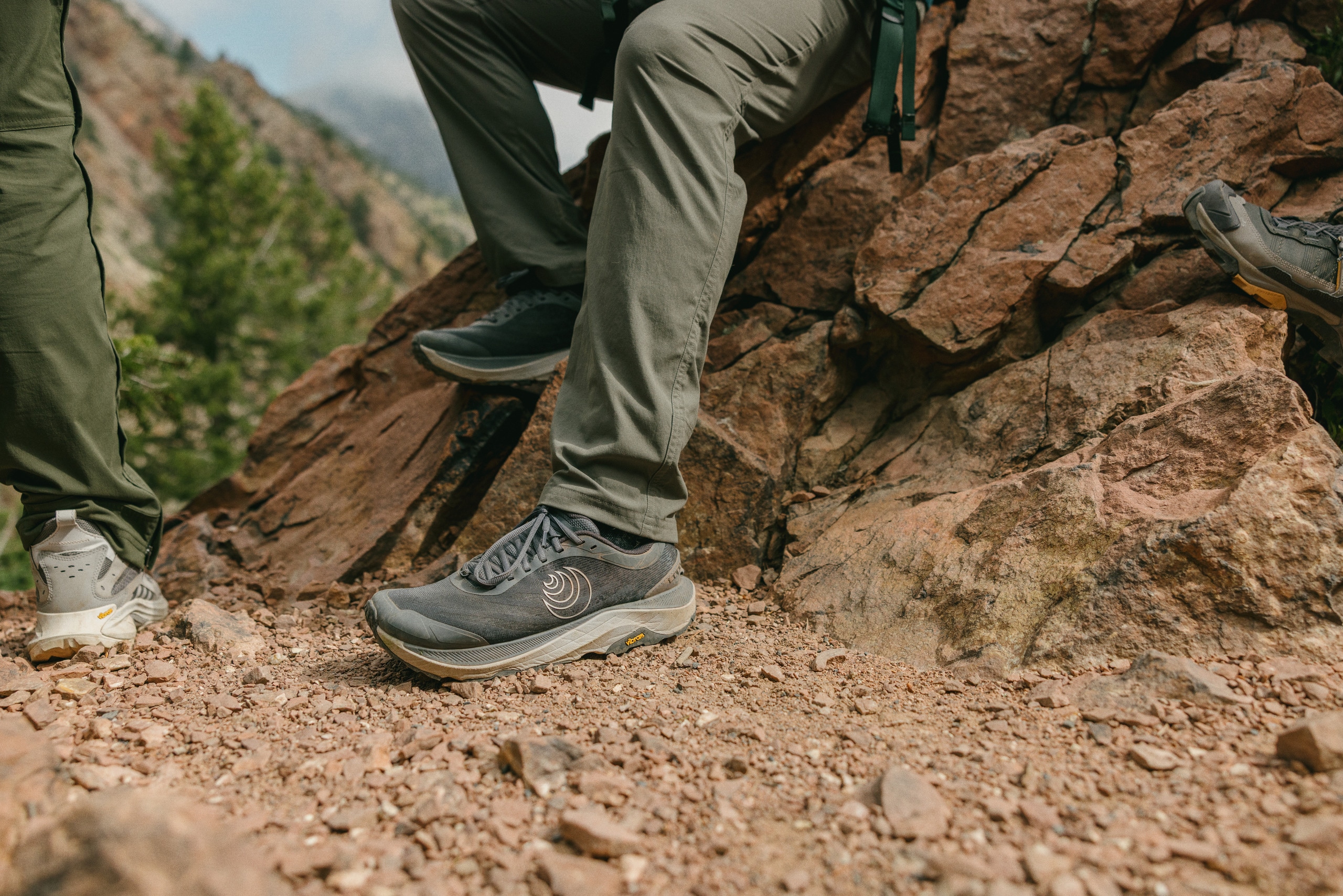
Bottom Line: The wide toe box, combined with a high-cushion midsole and grippy Vibram outsole, makes the Topo Athletic Ultraventure 4 a favorite for trail runners looking for a foot-shaped shoe, without having to forgo achilles support.
Testing Stats:
- Total distance: 287 miles
- Testing states: New Mexico, Colorado, Minnesota
- Best testing story: REI store manager Andy Frey took these shoes for a spin on rocky trails and paved surfaces, noting: "After 60 miles, I can confidently say the Topo Ultraventure 4 is ready for another 60 and probably won't feel worn until 250ish. The firmer foam didn't feel fatigued, and the uppers showed virtually no signs of wear outside of some mud and dirt."
Salomon Genesis Trail-Running Shoes
Score 92
Weight (Pair) 1 lb. 1.1 oz. (women's); 1 lb. 3 oz. (men's)
Heel-to-toe drop (mm) 8
Cushion Maximum (34 mm stack height)
Best for Technical terrain, rugged trail, mountain running, daily training
Known for their durable and grippy trail running shoes, Salomon continues the tradition with Genesis, a trail-running shoe deemed "very comfy right out of the box" by Becca Holland, REI brand advertising specialist and Colorado-based tester. The roomy toe box was sufficient for most wearers, who reported it allowed their toes to spread out without excessive movement. Some testers and customer-reviewers found these shoes to run a bit large, with many needing to size down a half size (try them on at your local REI before purchasing). For those who require a weatherproof shoe, the Genesis GTX (women's, men's) is available with GORE-TEX technology.
Where these shoes really stand out is traction, with one customer-reviewer from New York summing it up: "Earth, roots, stones—bone-dry to soaking wet—I experienced no problems with slippage. It is probably the first thing I look for in a trail shoe, and these are great." While Holland noted slipping a couple of times in these shoes, Kimmie Hamilton, REI sales specialist and Illinois-based tester, ranked them well for traction after trying them on mud, rocks, and wet clay.
The Genesis comes with a Quicklace closure, which means you don't have to worry about your laces untying mid-run (a common complaint). While some initially appreciated this feature, Holland noted that it could be difficult to maneuver, and found it hard to get a good fit. The shoes feature a mesh pocket at the top of the tongue to store excess laces, but some customer-reviewers found this feature unintuitive.
The overall feel of the Genesis trail running shoes is cushy and comfortable, requiring a minimal break-in period. On longer runs, Hamilton found the midsoles provided moderate cushioning, also noting that her surgeon and podiatrist were won over by the Salomon Genesis, confident it would provide their patient with ample support and stability during races. Buy here.
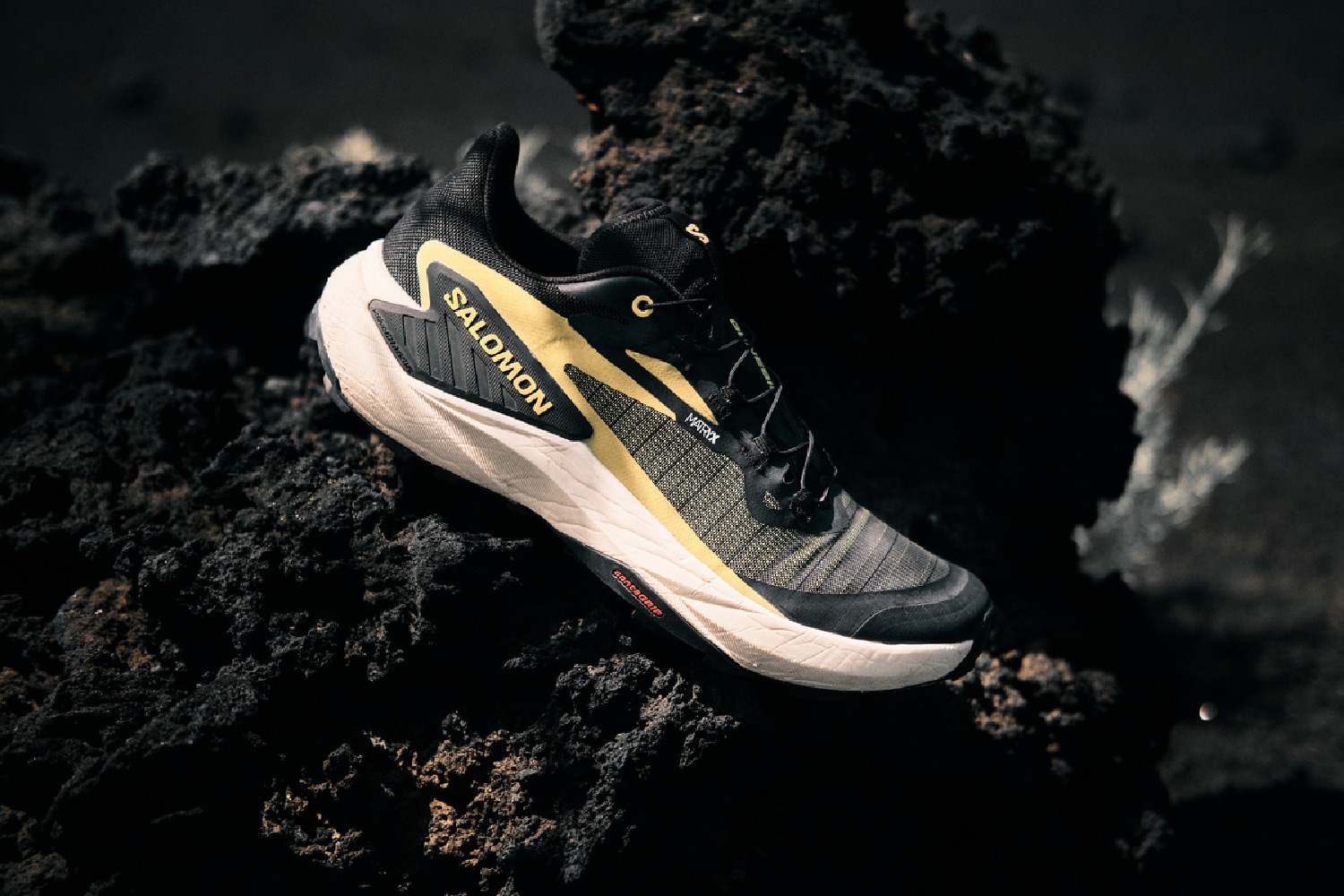
Bottom Line: The lightweight Salomon Genesis offers extra grip and a comfortable feel, allowing you to tackle technical trails with confidence.
Testing Stats:
- Total distance: 199 miles
- Testing states: Colorado and Illinois
- Best testing story: Versatility is the name of the game, with REI brand advertising specialist Becca Holland noting: "I ran on different types of terrain, including uphill and downhill sections that were muddy and rocky with many tree roots. The lightweight Optifoam in the midsoles, which provides moderate cushioning, helped me a lot during my longer runs."
On Cloudsurfer Trail Trail-Running Shoes
Score 87
Weight 15.8 ounces (women's), 1 lb. 3.4 oz. (men's)
Heel-to-toe drop (mm) 7
Cushion Moderate
Best for Light trail, road-to-trail
Hybrid running shoes are a tricky thing. They're meant to perform on slick road and light to moderate trail, working without a hitch for runners who like to dabble in different kinds of terrain. They're not, however, built for technical routes, so best to think of them for your adventures closer to home. In this sense, the new On Cloudsurfer Trail fulfilled our wishes. The EVA/Helion™ superfoam and CloudTec technology provide cushiony responsiveness, while the Missiongrip™ rubber outsole gives you the grip you want on road and trail. Testers noted that while the Cloudsurfer Trail performs well across various conditions, its shallow lugs won't do much for you in the mud. For that, see our picks for technical terrain and mountain running, above. Buy here.
Shop the latest version: Check out this first-person tested review of the new Cloudsurfer Trail 2 by REI contributor and experienced runner Courtney Holden. Buy women's and men's.
Buying Advice
When purchasing trail-running shoes, consider these three factors: heel-to-toe drop, cushioning and traction.
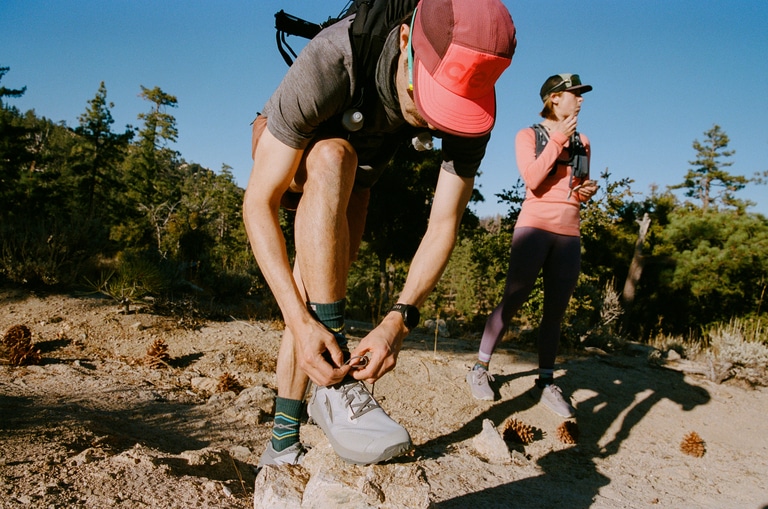
What is drop and why does it matter when shopping for trail-running shoes?
When someone mentions the "drop" of a running shoe, they are referring to the difference in height between a shoe's heel and toe. A shoe's drop primarily affects how your foot strikes the ground.
In previous years, high drop shoes (10 millimeters or more) have been more popular, because they help you land on the heel first and roll through your foot to complete the running motion—which was thought to be the preferable way to run. More recently, however, "midfoot striking," or landing on the middle of your foot, is all the rage in running content, as many physical therapists who specialize in the activity consider it a more natural way to land. (Learn more in Minimalist/Barefoot Running Basics.)
In this gear guide, you'll find shoes with moderate drop (6 to 8 millimeters) and low drop (3 to 5 millimeters). For folks who haven't tried midfoot striking before, consider sticking with a moderate-drop shoe, such as the Brooks Cascadia 19.
If, however, you're interested in dabbling with mid- or forefoot striking to minimize any injuries you think may be coming from heel striking, look for a low-drop shoe like the New Balance Fresh Foam X Hierro v9 or Topo Athletic Ultraventure 4.
There's currently no zero-drop shoe (0 millimeters) on our list. Zero-drop shoes mimic your natural gait.
Note: If you're a heel striker, or someone transitioning from a higher-drop shoe to a lower-drop shoe, progress slowly. Jumping straight into a low- or zero-drop shoe may result in muscle soreness or even injury. Such shoes often make your Achilles tendon work harder than it's probably used to.
Why does cushioning matter when it comes to trail-running shoes?
Your shoe's cushioning is often referred to as "stack height." This number refers to the amount of padding under your foot, particularly beneath the heel. The higher the stack height, the more comfort you can expect while pounding the ground. (You’ll also be more protected from obstacles you might land on.) But, higher stack shoes sometimes lack precision and ground feel, since there’s more room between your foot and running surface.
Today, there are generally four categories of cushioning in trail-running shoes:
Barefoot: Made popular in the early 2000s, a barefoot-style shoe means there is no padding underfoot. This is the preference for runners who want to "feel" the ground beneath them, and understand their own biomechanics. There are no barefoot-style shoes on this list.
Minimal: Minimalist shoes can be a good option for runners who still want to feel the ground, while enjoying a small amount of cushion (think: race flats). Again, you won't find any minimalist shoes on this list.
Moderate: Shoes with moderate cushioning have enough padding for cruising over rocks with little risk of bruising your feet. Look for shoes with a stack height between 20 and 29 millimeters.
Maximum: Shoes with maximum cushioning—like the New Balance Fresh Foam X Hierro v9 and Topo Athletic Ultraventure 4—boast more than 30-millimeter stack heights. Advocates believe the bonus padding is easier on the joints and minimizes muscle fatigue, but opponents believe these shoes are bulkier and less agile.
How does traction help trail-running shoes perform?
Unlike their road-running brethren, trail shoes rely on grip. In order to properly assess a shoe’s grip, it can help to understand how the type of rubber and the arrangement of the lugs—or cleatlike bumps on the sole—affect traction. For instance, a softer rubber will be grippier, but it will wear down faster.
For maximum traction, look for trail-running shoes with deep (greater than 4 millimeters), angular lugs, which hug the ground while expelling mud and muck. For dry trails and fine grit, a shoe that has large, blocky lugs spaced farther apart will grip best.
How We Test
In the spring and summer of 2025, we enlisted REI Co-op members and contributors from around the country to log miles on the best trail-running shoes currently available at the co-op. Our testers took a variety of shoes through the paces on rolling meadows, technical ridgelines, down steep descents and up icy hills to rate each shoe's performance.
After four- to eight-week stints, our crew rated the shoes on five categories: comfort, fit, traction, durability and support. Testers ranked their shoes in each category on a scale of 1 through 10. We tallied the data and calculated the average, adjusting the chosen score where written feedback qualified it. The five pairs of trail-running shoes included here are the highest-scoring shoes in our test, and the scores are their averages.
After doing the math, the New Balance Fresh Foam X Hierro v9 received the highest marks. The Brooks Cascadia 19 and Topo Athletic Ultraventure 4 scored just below, proving they earned top spots in their respective categories. The Salomon Genesis and the On Cloudsurfer Trail scored high in most categories, still receiving top marks from trail runners.
Related Articles
